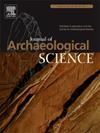Archaeological obsidian sourcing: Looking from the first 60 years to the next
IF 2.6
1区 地球科学
Q1 ANTHROPOLOGY
引用次数: 0
Abstract
Obsidian sourcing (or provenancing) is the process by which obsidian artifacts are matched to the geological sources from which the raw material originated. Given that obsidian is a substance that has been used from the emergence of our genus to the 21st century, reconstructing the movement of obsidian artifacts has great relevance to a wide variety of research questions. Matching obsidian artifacts to their origins has been called “one of the success stories of archaeological science” as well as “one of the most productive and successful research programs of archaeological science” (Williams-Thorpe, 1995). Furthermore, it has been labeled as “a microcosm of the development of archaeological science” (Henderson, 2001), reflecting wider trends within archaeology. Identifying an artifact's source is only a proximate goal: the ultimate aim is to elucidate human behavior in the past. Since its inception during the 1960s, a variety of technological and methodological advances have been incorporated into obsidian sourcing research around the world. The focus here is not an overview of global obsidian sourcing articles. Instead, this paper is organized according to a set of familiar questions: What? When? Who? Where? How? Why? What next? The goal here is to address how obsidian sourcing has been, is now, and can be used to better understand our past, eventually moving from generating data to developing archaeological models and theories.
考古黑曜石来源:从前60年到下一个
黑曜石溯源(或溯源)是指黑曜石人工制品与原材料起源的地质来源相匹配的过程。鉴于黑曜石是一种从人类出现到21世纪一直被使用的物质,重建黑曜石文物的运动与各种各样的研究问题有着很大的相关性。将黑曜石文物与其起源相匹配被称为“考古科学的成功故事之一”,也是“考古科学中最富有成效和最成功的研究项目之一”(Williams-Thorpe, 1995)。此外,它被称为“考古科学发展的一个缩影”(Henderson, 2001),反映了考古学中更广泛的趋势。确定人工制品的来源只是一个接近的目标:最终的目标是阐明过去的人类行为。自20世纪60年代成立以来,各种技术和方法的进步已被纳入世界各地的黑曜石采购研究。这里的重点不是全球黑曜石采购文章的概述。相反,这篇论文是根据一系列熟悉的问题来组织的:什么?什么时候?谁?在哪里?如何?为什么?下一个什么?这里的目标是解决黑曜石的来源是如何,现在,可以用来更好地了解我们的过去,最终从生成数据到发展考古模型和理论。
本文章由计算机程序翻译,如有差异,请以英文原文为准。
求助全文
约1分钟内获得全文
求助全文
来源期刊

Journal of Archaeological Science
地学-地球科学综合
CiteScore
6.10
自引率
7.10%
发文量
112
审稿时长
49 days
期刊介绍:
The Journal of Archaeological Science is aimed at archaeologists and scientists with particular interests in advancing the development and application of scientific techniques and methodologies to all areas of archaeology. This established monthly journal publishes focus articles, original research papers and major review articles, of wide archaeological significance. The journal provides an international forum for archaeologists and scientists from widely different scientific backgrounds who share a common interest in developing and applying scientific methods to inform major debates through improving the quality and reliability of scientific information derived from archaeological research.
 求助内容:
求助内容: 应助结果提醒方式:
应助结果提醒方式:


